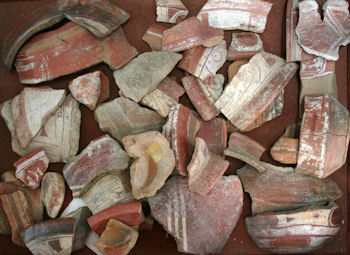
Saladoid culture is a pre-Columbian indigenous culture of territory in present-day Venezuela and the Caribbean that flourished from 500 BCE to 545 CE. Concentrated along the lowlands of the Orinoco River, the people migrated by sea to the Lesser Antilles, and then to Puerto Rico.
Whilst this expansion was not a bid to spread influence or build an Empire, the group did leave the South American peninsula in order to explore the limits of their technology and settle on what they thought were uninhabited islands.
The name Saladoid is not a direct reference to the groups genetic structure or cultural differences. Instead, it is from their archaeological categorisation which identify the peoples of the early ceramic age. As the strongest archaeological evidence in favour of the Saladoid, is their unique, ceramic pottery styles, which validate the existence of the culture.
Chronology
The Saladoid period includes the four following subcultures, defined by ceramic styles.
- Hacienda Grande culture(250 BCE–300 CE)
- Cuevas culture(400–600 CE)
- Prosperity culture(1–300 CE)
- Coral Bay-Longford culture(350–550 CE)
Migration
This culture is thought to have originated at the lower Orinoco River near the modern settlements of Saladero and Barrancas in Venezuela. Seafaring people from the lowland region of the Orinoco River migrated into and established settlements in theLesser Antilles, Puerto Rico, and Hispaniola. They displaced the pre-ceramic Ortoiroid culture. As a horticultural people, they initially occupied wetter and more fertile islands that could best support agriculture. These Indigenous peoples of the Americas were an Arawak-speaking culture.
Between 500-280 BCE, they immigrated into the Lesser Antilles and Puerto Rico, eventually making up a large portion of what was to become a single Caribbean culture. In Puerto Rico, evidence of their historic settlements is found mainly in the western part of the island.
Saladoid people are characterised by agriculture, ceramic production, and sedentary settlements. Their unique and highly decorated pottery has enabled archaeologists to recognise their sites and to determine their places of origin. Saladoid ceramics include zoomorphic effigy vessels, incense burners, platters, trays, jars, bowls with strap handles, and bell-shaped containers. The red pottery was painted with white, orange, and black slips.
Distinctive Saladoid artefacts are stone pendants, shaped like raptors from South America. These were made from a range of exotic materials, including such as carnelian, turquoise, lapis lazuli, amethyst, crystal quartz, jasper-chalcedony, and fossilised wood. These were traded through the Great and Lesser Antilles and the South American mainland, until 600 CE.
